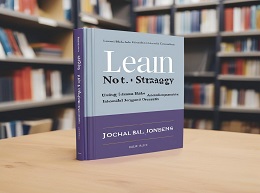The Art of Possibility

"The Art of Possibility" by Rosamund Stone Zander and Benjamin Zander offers a refreshing perspective on life, leadership, and creativity. Through captivating stories and practical insights, the authors challenge readers to embrace possibility and unlock their full potential. In this comprehensive review, we'll explore the key concepts of "The Art of Possibility," provide real-world examples, and reveal strategies for cultivating a mindset of abundance and possibility in all aspects of life.
The Practice of Possibility:
Zander and Zander introduce the concept of the "practice of possibility," encouraging readers to adopt a mindset that embraces abundance and creativity.
Example:
J.K. Rowling's journey from struggling single mother to bestselling author of the Harry Potter series is a testament to the power of possibility and resilience in the face of adversity.
Giving an A:
The authors advocate for the practice of "giving an A," treating others as if they have already achieved their full potential.
Example:
A teacher who gives every student an A at the beginning of the semester communicates belief in their ability to succeed, empowering them to strive for excellence.
Rule Number 6:
Zander and Zander introduce "rule number 6" a reminder not to take ourselves too seriously and to lighten up in challenging situations.
Example:
During a tense negotiation, invoking "rule number 6" can diffuse tension and foster a more collaborative atmosphere, leading to better outcomes for all parties involved.
The Practice of Gratitude:
The book explores the practice of gratitude and the transformative power of acknowledging and appreciating the gifts in our lives.
Example:
Keeping a gratitude journal, where individuals write down three things they are grateful for each day, can cultivate a greater sense of abundance and well-being.
Leading from Possibility:
Zander and Zander discuss leadership from a perspective of possibility, inspiring others to reach their full potential and create positive change.
Example:
Nelson Mandela's leadership during South Africa's transition from apartheid to democracy exemplifies leading from possibility, inspiring reconciliation and healing in a divided nation.
The Symphony of Selves:
The authors explore the concept of the "symphony of selves," recognizing and integrating the various aspects of our personalities.
Example:
Embracing all parts of ourselves both light and shadow allows us to cultivate authenticity and wholeness, leading to greater fulfillment and self-acceptance.
In conclusion, "The Art of Possibility" offers a transformative perspective on life and leadership, urging readers to embrace abundance, creativity, and possibility in all aspects of life. By adopting practices such as giving an A, embracing rule number 6, practicing gratitude, leading from possibility, and embracing the symphony of selves, individuals can unlock their full potential and create meaningful change in the world.













